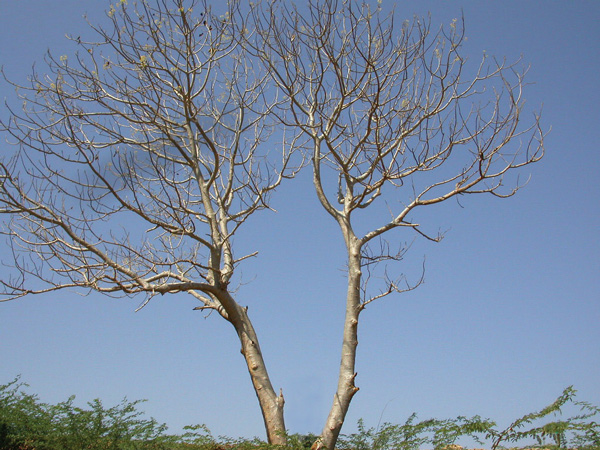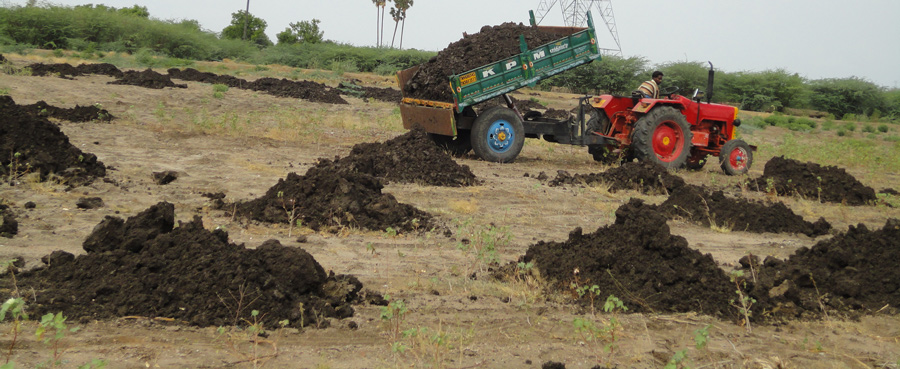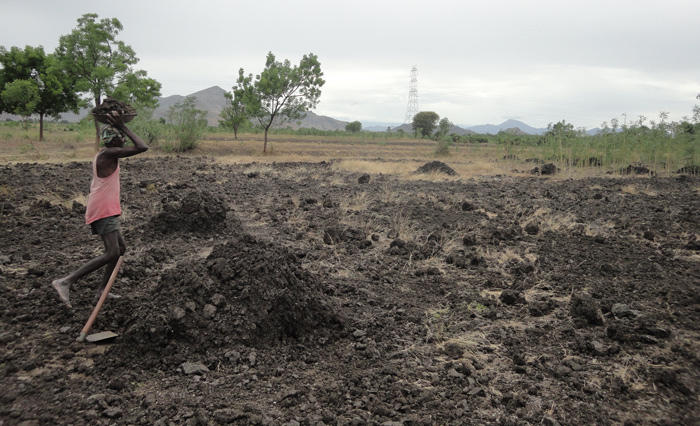
Case4-September-2017
In the last two centuries, there has been a drastic increase in the average temperature of the earth’s climate system. Mankind has exhausted more amounts of greenhouse gases from the environment in the name of development. This emission has led to the increase in global temperature profoundly known as Global Warming. Water vapour, carbon dioxide, ozone, nitrous oxide and methane are the predominant greenhouse gases. Greenhouse gases originated during the formation of the Earth itself.

Greenhouse gases absorb the ultraviolet rays and heat from the Sun. Then, the greenhouse gases are partially emitted back into the space and part of it gets retained in the earth atmosphere. This process aids the earth to balance its temperature, conducive for the existence of the wide species of flora and fauna.
The ecosystem of the earth relies largely on the small changes happening in its inner sphere and the atmosphere. It has greater implications over the larger ecosystem. Recent human actions have increased the amount of greenhouse gases in the earthen sphere. Researchers point out that after-industrialisation, the global temperature has increased drastically when compared with the pattern of global warming in the previous centuries.
Luxurious lifestyle coupled with the population explosion, fast phase conversion of forest lands into farmlands, urbanisation and predominant and excessive use of fossil fuels to meet the energy needs have led to the excessive discharge of greenhouse gases. The diminishing floral natural resources have resulted in a reduction in the natural purifiers to absorb carbon dioxide and increase the oxygen quantity so as to balance the greenhouse gas level. This has raised the increase of greenhouse gases in the inner sphere which not only affected the human clan but also the whole ecosystem. The impact of the climate change has affected the poor and ultra-poor community badly.
The earth has undergone evolution and various transformations since the existence of life on earth. The living beings get adapted to the changes and have evolved to their current state over the years. Living beings started to adapt their environment, lifestyle, and food habits based on their need. In Darwin’s words, all species of organisms arise and develop through the natural selection of small, inherited variations that increase the individual's ability to compete, survive, and reproduce, simply termed us the survival of the fittest.
Ancient lifestyle of the Tamil community has always allied with nature which has clearly conceptualised in five categories of the ecosystem termed as the “Ainthinaigal”. These ecosystem landscapes are Kurinji as Mountain regions, Mullai as (foot hills with grass land) forest regions, Marutham as wet lands, farmlands, Neithal as coastal landscapes and Palai as desert lands. This landscape classification is not restricted to its physical characteristics. It also includes appropriate lifestyles of the people such as food, dressings, livelihoods and shelters. The ancient Tamil literature Tholkappiam had depicted these landscapes and the lives of the people in detail. Our ancestors had defined wisely their livelihoods and festivals according to the nature of landscapes and the climatic environment. Based on these landscapes and the climatic conditions, the houses were constructed to mitigate different climatic factors such as heat, cold and rain so that they could align with the nature sensibly. For instance, coastal areas are always prone to the cyclones, so the ancestors had constructed their houses with wide walls, tall roofing and with sloppy tiled roofs.
Likewise in the drought-prone areas, construction of the houses was mostly in the proximity of water bodies without affecting the nature of the hydrology. They had used raw materials such as sand and bricks to raise the walls and roofing with locally available hay and grass in the construction of huts at higher elevation. These local materials aided them to tackle the severity of heat waves and made them feel cool inside their homes. To meet their water requirements, they created several tanks in cascades. These water structures assisted them to meet the water requirements of the community and their livestock. This aided them to tackle the droughts. The water structures were also useful in tackling the floods in case of heavy rains. The cascades of water structures were of great use in managing droughts as well as floods.
They practised multi-crop cultivation adaptive to the local terrain. This not only gave them sustainable production but helped them tide over the climate impacts Our ancestor’s principal understanding and knowledge of nature led them to have a safe and calm life without exploiting the ecosystem. Their food habits also reflect their local varieties which had attributes to adapt the local climate to human needs. Hence, their adaptation to nature is very high giving least space for influencing climate change in their years. Hence, it is time to think and make efforts to revive the traditional practices embracing them to the present circumstances.
Urbanisation, advancement in name of economic development, and political changes are being done without following the ethics laid by our ancestors. The development what we are undergoing is more of unethical consumerism.

The exploitative usage of natural resources has become a habit of the humans; this has led to the unsustainable breaking point in balancing the resource supplies. The present lifestyle is driven by social gree;, this has resulted in the degradation and subsequent build-up of concrete jungles in farmlands, and water structures, and natural resource exploitation. This recalcitrant attitude towards the environment in the name of development has led to inundation as a common phenomenon.
Inappropriate construction of standardised concrete buildings, without having consideration for environmental adaptability, has led to more heat origination. This has created the need for machines such as air conditioners which run on energy produced from fossil fuel, and has resulted in environmental degradation and global warming.
Encroachment on the waterways and poor urban planning tied with improper solid waste management are the ignition point of environmental destruction. The inequity in access to the natural resources, luxury lifestyle, and excessive use of natural resources other than actual requirements had resulted in the environmental degradation. Indigenous festivals, foods, culture, traditions, and clothing associated with the local environment are being obliterated and adapting to non-native culture (western lifestyles) has its influence over the local environment.
Global warming is going to lead to a great disaster, but controlling greenhouse gases is not the only solution we have in hand. The present economic development and change of lifestyle have also impacted the climate change. Several multinational companies are working towards greed-based profit by destroying natural resources.
The ultra-poor people who are the most affected by climate change are not the reason for the creation of greenhouse gases. The rich and the economically better off who constitute less than 10% of the population are consuming 90% of the natural resources. Day by day, the consuming ability of the poor is on the decreasing trend which leads to increased deprivation of the poor. We need to change this consumerism considering the disparity and its bearing on climate change. Individual changes could bring in the desired effect on reducing the greenhouse gases and to preserve nature.
In India, more than 50% of the population is directly or indirectly engaged in agriculture for their livelihoods and are mostly ultra poor. They are on the verge of being exposed to the clout of climate change impacts. Globalisation and the open economic market are exponentially destroying the small economies of the ultra poor, thereby risking their livelihoods at stake. This is a catastrophe that the emerging economies face due to their economic approaches. We will not be able to stop the climate change, but we can work on adaptation and mitigation measures such as reducing or eliminating the product which emits high greenhouse gases, planting more trees and enhancing the green space to absorb carbon dioxide and emit oxygen. This helps in creating equivalence for the emission and absorption of GHGs.

Due to increase in population and the need for guaranteeing food safety, the practice of mono-cropping has emerged. To overcome food security, hybrid seeds, fertilizers, equipment and high water consumption were introduced. This resulted in totally reversing the environment not keeping in mind the adaptability of the changes. Especially in the region of drought and flood-prone areas, food security research is most needed. Traditional agriculture knowledge and culture are immersed together in our lifestyle which has safeguard mechanism such as diverse cropping pattern. Multi-crop pattern enhances the agricultural biodiversity facilitating the broad emergence of flora and fauna. At the same time, it is an individual responsibility to preserve our traditional knowledge and its benefits. To ensure food security, we have to act on the concept of “sustainable management”.
Development is inevitable, yet awareness is the need of the hour. Such awareness that the earth has to be conserved is getting a wider reach. These positive developments are the silver lining in the ray of hope of creating an equal, unjust, balanced social order in the coming years.
There could be better management of the existing water bodies and their supporting structures to catch the entire rainfall. Engagement of people in the restoration of water bodies is crucial in reviving and restoration of such structures. Crop selection according to the availability of water helps to tide over climate change issues. These water bodies help to tackle drought and floods.
The common contributor to threatening diseases are the mosquitoes; hence creating awareness about such diseases is most important. The spread of diseases is nowadays in line with yesteryear epidemics creating huge manpower losses similar to that of disasters. Awareness on preventive health care helps to create a resilient health care.
Providing diversified livelihood opportunities is a path to creating a source of constant income. Government policies should facilitate to create secured livelihoods with localised consumption. In a short-term aspect, adaptation and mitigation is also a tool to combat climate change.
Categorising the disasters and providing adequate training to the community show the way to tackle even the worst disaster. Systematic approaches and training programmes are an effective way to reduce the loss of lives and assets in meeting such contingencies.
DHAN believes in promoting community institutions to address their developmental needs. These community institutions take up renovation and restoration of tanks, lakes, ponds and other water structures and the efficient use of natural resources. Introduction of diverse crops, technologies, methods, and social security covers a wide range of needs, health interventions and techniques in a sustainable way to help communities build their resilience adapting to the localised situations. Connecting communities in conservation efforts benefit creation of local ownership in addressing environmental issues. Economic empowerment in ethical means helps build a society conscious of their developmental needs and the macroecological influences.